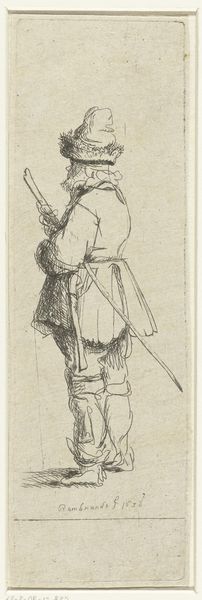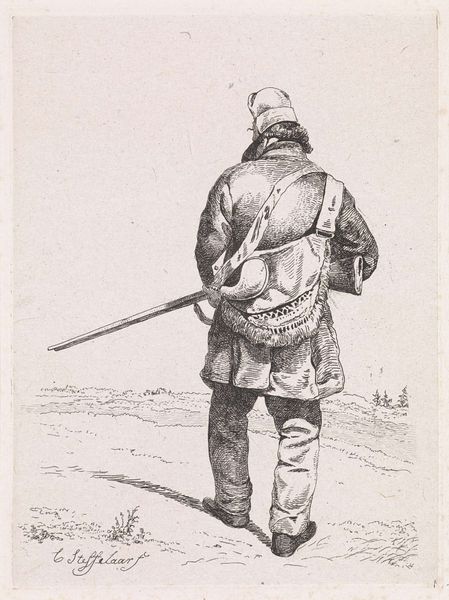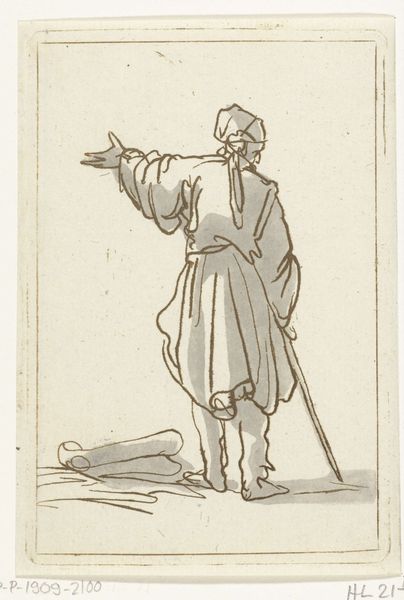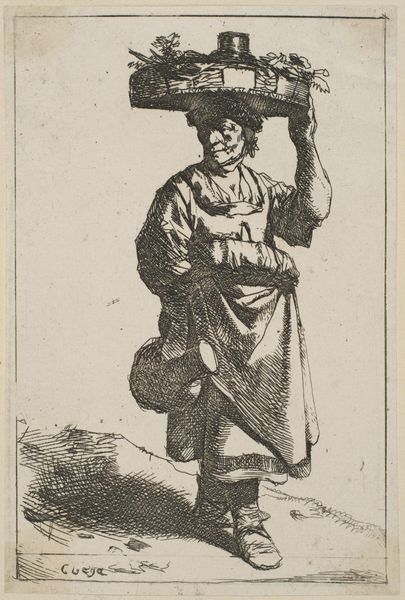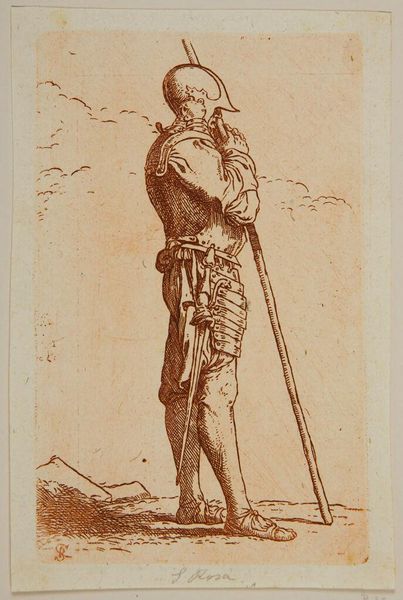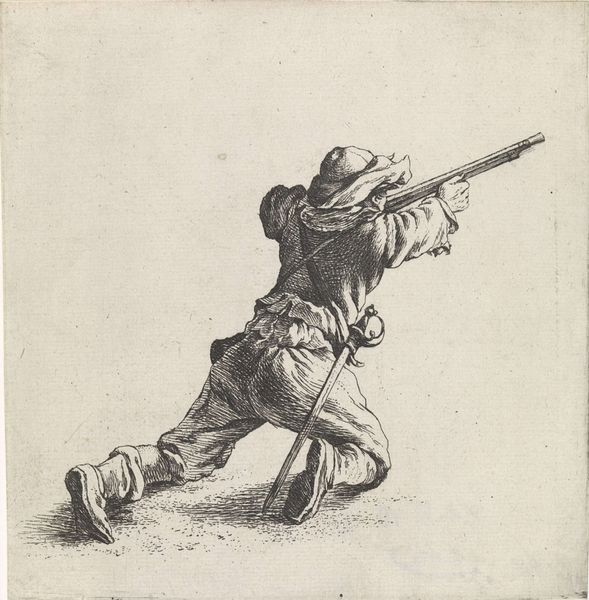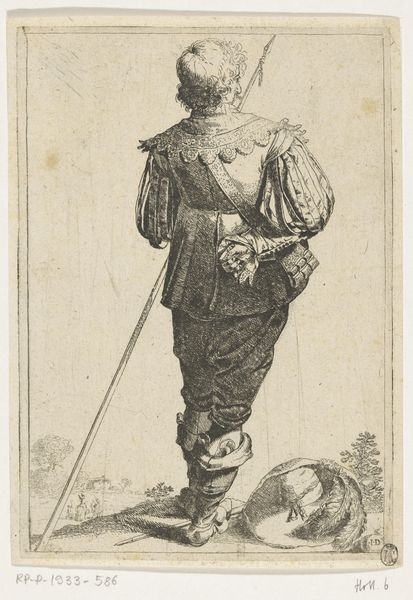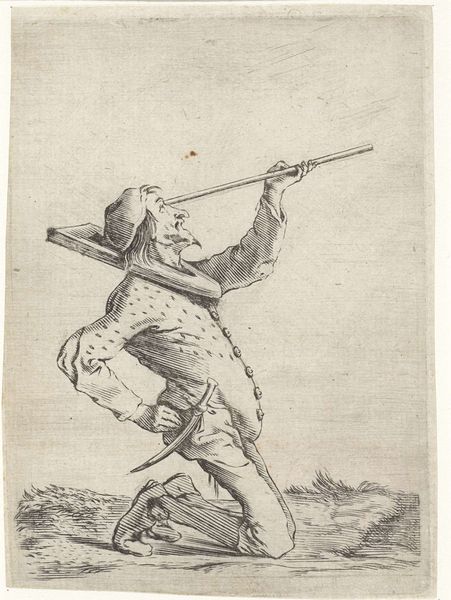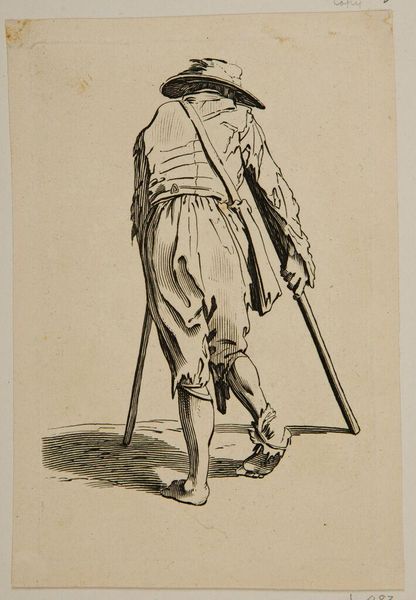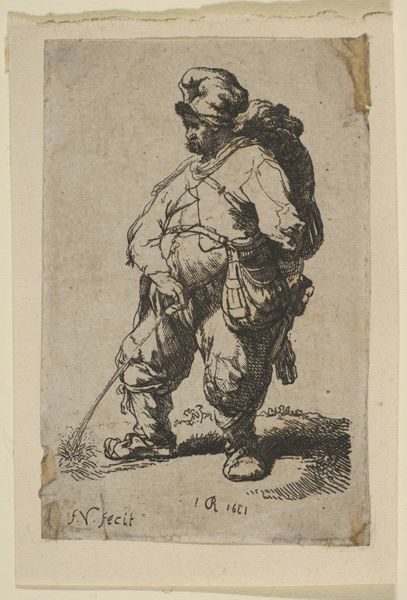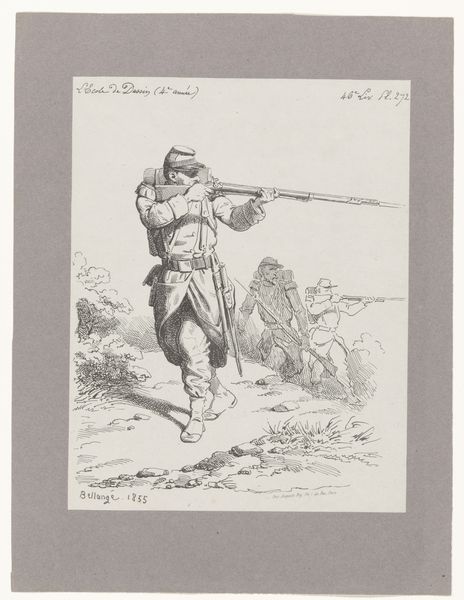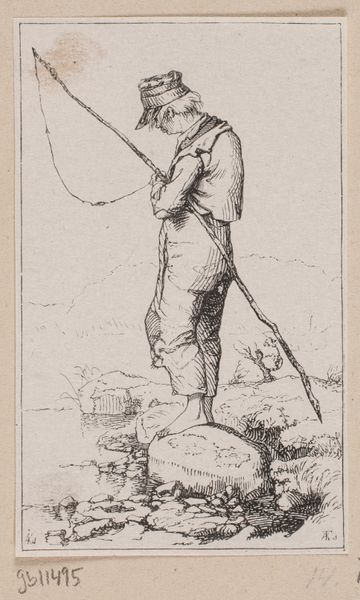
print, etching
#
baroque
#
dutch-golden-age
# print
#
etching
#
landscape
#
figuration
#
line
#
genre-painting
Dimensions: height 121 mm, width 78 mm
Copyright: Rijks Museum: Open Domain
Curator: Salomon Savery created this etching, titled "Schaatsende man, van achter gezien," sometime between 1630 and 1665. It’s currently held in the Rijksmuseum. Editor: There's a captivating mundanity about it. We’re given this almost voyeuristic view of a figure receding into the icy expanse; he seems so ordinary. Curator: Genre paintings, especially those from the Dutch Golden Age, frequently portray scenes of everyday life, elevating the quotidian to the realm of art. We can observe this play out here. What makes it intriguing is its almost singular focus – it’s the man on skates who takes centre stage, and not necessarily a grander narrative about the landscape that envelops him. Editor: It does speak to the rise of individualism during that period, doesn't it? The emphasis isn't on collective identity or some heroic ideal, but rather on a single person engaged in a common activity. However, his skates, curving like horns at the tips, inject this image with subtle satirical undertones. Curator: It's precisely this blend of the ordinary and the slightly absurd that makes the piece resonate, inviting considerations around representations of labor, leisure, and perhaps even social mobility in 17th century Dutch society. Think about the rising merchant class and their increasing influence. Editor: Considering the cultural landscape of the time, could this print perhaps represent some subversive commentary about class? He’s well-dressed, though the details in the rest of the print denote a rather normal life. I’d venture it may speak to both aspiration and maybe a bit of derision or perhaps caution concerning outward displays of status. Curator: These works provided a visual vocabulary for a society undergoing profound change. The focus on genre-painting reflects this society’s fascination with its own image, one it was actively constructing and negotiating. Editor: Art allows us to interrogate the past, and more so, understand ourselves better by contextualizing contemporary life within art history. Curator: Indeed, its simplicity belies its historical richness.
Comments
No comments
Be the first to comment and join the conversation on the ultimate creative platform.
